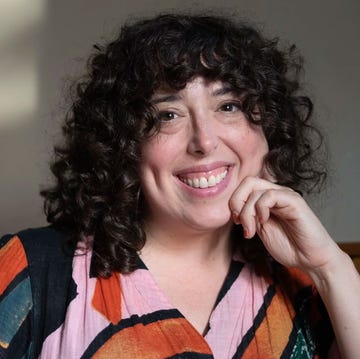Russell Chatham showed up unannounced with a pretty girl in a vintage Cadillac he had driven down from Montana. It was 1977, and he had come to talk about contributing to Outside, which we were launching out of the Rolling Stone offices in San Francisco. Tom McGuane had told Russell about the new magazine, and he had some ideas. At his suggestion, we went across the street for a drink at a dive bar called Jerry’s. He never mentioned his painting.
Russell was there as a writer, having already published outdoor pieces in Sports Illustrated. His first book, The Angler’s Coast (1976), a collection of his fishing stories set in the Pacific Northwest, had come out the previous year, and he had two more on the way: Striped Bass on the Fly: A Guide to California Waters (1977) and Silent Seasons: Twenty-One Fishing Stories (1978), an anthology with pieces from five celebrated writers who also happened to be his fishing buddies. Interesting, I thought, and we had more than a couple drinks that afternoon at Jerry’s. I could not have guessed that Russell would contribute to every magazine I edited over the next four decades.
This article appears in Issue 32 of Alta Journal.
SUBSCRIBE
Russell had moved to Livingston, Montana, after visiting Tom McGuane. They had met in Bolinas when Tom was a Stegner Fellow at Stanford, and Russell was mostly just fishing the coastal rivers. They started fishing together, but what we now understand as gentrification was already beginning in Marin. Livingston was still a cattle and railroad town on the Yellowstone River, at the bottom of the appropriately named Paradise Valley—if you were a sportsman. Tom had moved to his Raw Deal Ranch outside of town on Deep Creek to avoid his hunting and fishing being “expeditionary.” Russell was looking for a place to make art with limited living expenses and found a place at the top of Deep Creek.
Russell told me he was living on $1,000 a year. Crazy number, but I believed him once I understood that the locals had a fine-tuned barter economy evolved from the old West, trading commodities and services—meat for hay or water rights, horse breaking for tractor repairs and a TV. Russell engineered a subsistence variation of his own—dental care for a small oil, winter vegetables and a load of firewood for a larger landscape, maybe with a 12-gauge thrown in. Livingston was like that then, and many farmers enjoyed Russell’s muted evocations of the surrounding mountains hanging in their kitchen. Russell was appreciated as a good neighbor and a wonderful painter. Nobody thought of him as a writer, but since his early twenties he had been working on his writing as well as his painting—especially after he got to Montana, where his best friends were serious writers.
The dedication in Dark Waters is “For Tom, Jim, and Guy.” Tom was McGuane, and Jim was Harrison, both recognized early in their careers as significant talents. Guy was Guy de la Valdène the writer and filmmaker scion of an aristocratic family with industrial wealth. Tom introduced Russell to Jim and Guy and the four of them started fishing together in Key West in the late 1960s and early 1970s—the other three chipping in to cover Russell’s airfare. They mastered tarpon and permit on the fly by day, and lived hard at night. Guy made a documentary about that life called Tarpon, with a score by Jimmy Buffett before “Margaritaville.”
Writers that they were, they talked about books, writing, and other writers. Life was an informal master class over rum drinks and maybe a line or two. None of Russell’s friends took a pencil to any of his copy, but they encouraged him, reading whatever he asked them to read, and suggesting what he might read next. The importance of this was distinct, but none of them ever talked about it.
Russell was self-taught both as a writer and as a painter. Hanging in his Deep Creek house was a landscape by his grandfather, Gottardo Piazzoni, who also painted fourteen unforgettable panels that now hang in their own room at the de Young in San Francisco. As a boy, Russell spent summers barefoot at his grandfather’s ranch in Carmel Valley becoming increasingly interested in painting, but there were no lessons. Days on the water with Tom, Jim, and Guy were grown-up, barefoot, and immersive in the same way. Russell came to live in his writing as he lived in his painting.
In his eloquent introduction to the 1988 first edition of Dark Waters, Russell’s friend and publishing collaborator Nick Lyons recounted a conversation with a then-popular outdoor writer who was outraged by Russell’s references to sex in his stories. Too bad, Lyons told the writer, whatever Russell included in his writing made everything better, like the eccentric ingredients of the tasty stew Mark Twain described at the beginning of Huckleberry Finn. That seems to me a concise description of Dark Waters in general and these stories in particular. For my money, as Russell would say when he was going to tell you something important, the first piece in the book, “The Great Duck Misunderstanding,” has it all: the natural world, historical context, deep knowledge, shotguns, oysters, trout, duck recipes—and a naked woman with a green parrot on her shoulder who “weaves Russell into a cocoon of sexual heat” that stupefied him for weeks.
Friends made a kind of flyer/poster on the occasion of Russell’s 40th birthday headlined: “What Russell Does with His Money.” Number one on the list was “gifts to girlfriends.” Women liked Russell, although he was not a handsome man in any traditional sense. The best description of him was Tom McGuane’s in an Esquire story that pointed out: “one blind eye and a nose too crooked to line up a shot with at the pool table” and that Russell often wore “a huge snot-green sweater that you might associate with the kind of people who rob lobster pots or who drive unheated taxis in Vancouver, pointing out Chinamen to tourists.”
The rich and famous that Russell started meeting through Tom and Jim didn’t care about his nose or that sweater. Many became enthusiastic collectors—movie people like Jack Nicholson and Harrison Ford. As the circle widened to include entrepreneurs including Yvon Chouinard and Microsoft co-founder Paul Allen, Russell’s many patrons collected his books as well as his art. All of his writer and journalist friends from Tom Brokaw to Peter Matthiessen to Hunter Thompson owned paintings too, mostly gifts from Russell. He had become a double-barreled threat on the literary scene. His paintings on the covers of Harrison’s novels somehow communicated the power of writing itself. I am thinking here of Legends of the Fall and how the cover painting “courtesy of Harry Dean Stanton” triggered a small but satisfying recognition. They were all just that cool, Jim, Harry Dean, and Russell.
That nuance is there, too, in all the pieces in Dark Waters—echoing his painting. Or perhaps the other way around. They are bold, evocative, and there is also a sweet sadness shining through the ethics of a man who writes in “Sporting Deaths” that when he was ten or eleven and on a walk with his .22, “I saw a cottontail rabbit dash into a thicket. I looked in and saw him sitting right there looking back at me. His innocence occurred to me as I shot him point blank. Too ashamed to admit what I’d done and stunned by the cruelty of it, I left the rabbit there, walked home and put the gun away for many years.”
At the same time Dark Waters is laced with sly irony and big laughs. Comparing trout fishing in Montana to what Russell finds in New Zealand, “you’re talking about the five waitresses at Martin’s 24-hour café up against a crowded Sunday afternoon at the Playboy Mansion West.” Writing about fishing and bird hunting also meant writing about food, drink, and the dangers of too much good life. “Eating Around” finds Russell remembering that “About four in the morning I had a beer, some salami and Japanese crackers, two Alka Seltzers (in the beer), a tranquilizer, and a codeine tablet, and a Bufferin. Before passing out I recall being pleased to have survived…”
Writing about fishing and bird hunting also meant writing about the complexities of friendship. “Dust to Dust” begins with the suicide of Russell’s friend and hunting partner Richard Brautigan, author of Trout Fishing in America, which mixed postmodernism with a kind of hippie magical realism and sold over 4 million copies. Russell explores so many channels in the confluence of hunting and masculinity that your head spins. The piece ends with the revelation that Richard accidentally shot and killed his best friend with a .22 while pheasant hunting.
The thing is, though, every piece in Dark Waters brings its own surprises. Here is the lede of “Pumping Irony”:
The first light of dawn was beginning to show over the grassy ridges, summer yellow even in the morning darkness, when I entered another kind of gloom: fog, pushing up the canyon from Bolinas Lagoon, threading its way among the eucalyptus groves, diffusing details, making the road wet and shiny. Like reentering a more silvery night, the fog was a silent dream, a promise of solitude.
Think about it. Dark Waters is of another time, but there is no painter who can write like that, and certainly no writer can paint like Russell. Never was.•
This essay is drawn from the introduction to a new edition of Dark Waters: Essays, Stories & Articles, by Russell Chatham, forthcoming from Ice Cube Press.
Terry McDonell has published widely as a journalist, top-edited a number of magazines, and was elected to the American Society of Magazine Editors Hall of Fame in 2012. He is president emeritus of the Paris Review Foundation and most recently cofounded Literary Hub.















